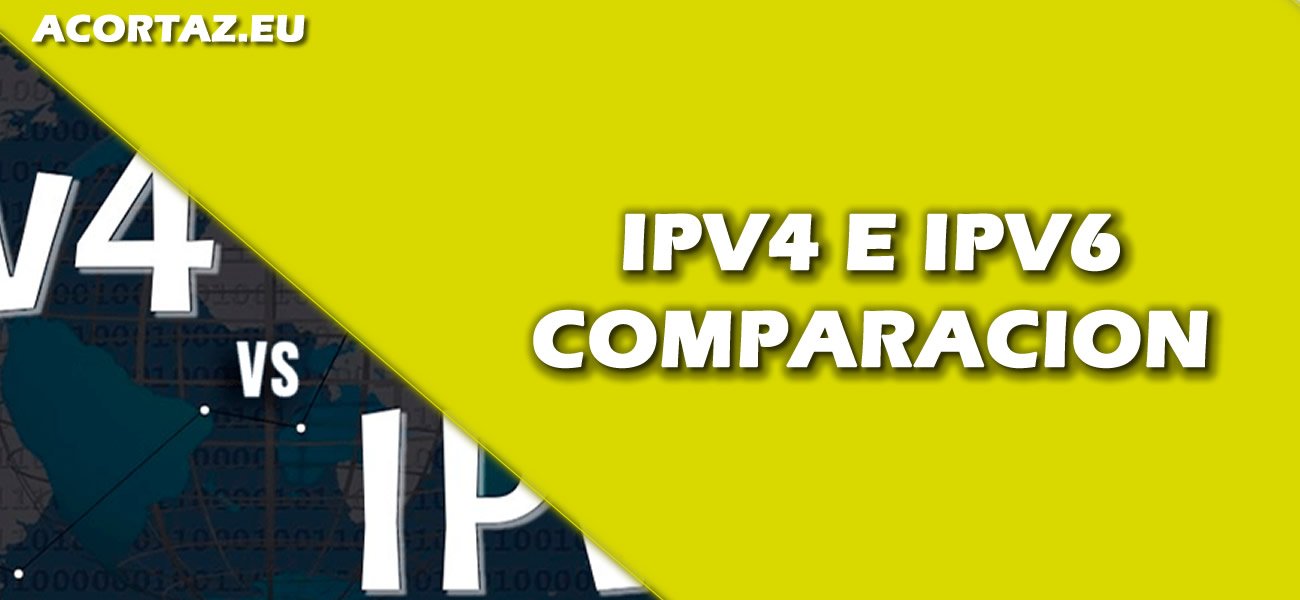In the world of internet communication, the https://acortaz.eu/ipv4-e-ipv6-comparacionplays a vital role in identifying devices and routing data between them. Two prominent versions of IP are in use today: IPv4 and IPv6. While both aim to accomplish the same goal—facilitating the transfer of data—there are significant differences between them. With the rapid growth of connected devices, it has become critical to understand these differences, especially as the world transitions toward wider adoption of IPv6.
IPv4: The Foundation of the Internet
https://acortaz.eu/ipv4-e-ipv6-comparacion, has been the backbone of internet communications since its development in the 1980s. It operates using a 32-bit address system, which allows for around 4.3 billion unique addresses. This may seem like a large number, but with the proliferation of smartphones, IoT devices, and computers, the number of available IPv4 addresses has been quickly exhausted. IPv4 addresses are written in a dot-decimal notation, such as 192.168.1.1, and are primarily numerical.
IPv4 has facilitated internet growth for decades, but as the demand for more devices increased, several workarounds were developed to extend its life. One of the most notable solutions is Network Address Translation (NAT), which allows multiple devices to share a single public IP address. While effective, NAT introduces complexity in routing and security.
IPv6: The Solution for a Growing Internet
IPv6, the successor to IPv4, was introduced to address the limitations of its predecessor. The most obvious and crucial improvement in IPv6 is its address size. Instead of 32 bits, IPv6 uses a 128-bit address system, allowing for an almost limitless number of unique addresses—approximately 340 undecillion (3.4 × 10^38). This provides enough capacity for the anticipated growth of internet-connected devices for the foreseeable future.
IPv6 addresses are written in hexadecimal notation, such as 2001:0db8:85a3:0000:0000:8a2e:0370:7334, and are alphanumeric. While this format might seem complex compared to IPv4, it offers significant advantages in terms of flexibility, scalability, and efficiency.
Addressing and Header Differences
One of the major technical differences between IPv4 and IPv6 lies in their header structures. IPv4 headers are more complex, with 12 fields and a total size of 20 bytes. In contrast, IPv6 headers have been simplified to only 8 fields, resulting in a more streamlined 40-byte header. This reduction in complexity enhances routing efficiency, as routers need less time to process packets.
Another key distinction is in address allocation. IPv4 supports broadcast, unicast, and multicast addresses, while IPv6 introduces a new type of address known as anycast, alongside unicast and multicast. Anycast enables data to be delivered to the nearest device in a group of potential receivers, improving performance in certain applications like content delivery networks (CDNs).
Security and Efficiency: IPv6 vs. IPv4
One of the significant advantages of IPv6 is its built-in security features. IPv6 was designed with IP Security (IPSec) as a core feature, providing end-to-end encryption and authentication. This enhances network security by preventing unauthorized access, tampering, or interception of data packets. While IPSec can be used with IPv4, it is not mandatory, meaning its security capabilities are often underutilized.
IPv6 also introduces improvements in autoconfiguration. While IPv4 often relies on Dynamic Host Configuration Protocol (DHCP) to assign IP addresses to devices, IPv6 can automatically configure devices without the need for a central server. This simplifies network management and reduces the chances of configuration errors.
Performance and Scalability
When it comes to performance, IPv6 offers several enhancements that make it more suitable for modern internet use. The simplified header structure, as mentioned earlier, allows routers to process IPv6 packets more efficiently. Additionally, the vast address space of https://acortaz.eu/ipv4-e-ipv6-comparacion eliminates the need for NAT, which can introduce latency and bottlenecks in IPv4 networks.
IPv6 also supports more advanced routing techniques, such as hierarchical routing, which can reduce the size of routing tables and improve the efficiency of data packet delivery. As a result, IPv6 is better suited for the increasing demands of global internet traffic and the growing number of devices that require IP addresses.
Challenges in Transitioning from IPv4 to IPv6
Despite its numerous advantages, the transition from IPv4 to IPv6 has been slow. One of the primary reasons for this is the incompatibility between the two protocols. IPv4 and IPv6 are not directly interoperable, meaning devices or networks using one version cannot communicate with those using the other without special mechanisms like dual-stack or tunneling.
Additionally, many legacy systems and applications are still reliant on IPv4, and upgrading these systems to support IPv6 can be costly and time-consuming. Network administrators must also acquire new skills and knowledge to effectively manage IPv6 networks, adding another layer of complexity to the transition.
Why IPv6 is the Future
Despite the challenges, the world is steadily moving toward IPv6 adoption. Major tech companies, internet service providers (ISPs), and organizations are already implementing IPv6 in their infrastructure. As the number of devices connected to the internet continues to grow, the need for a scalable, secure, and efficient addressing system like IPv6 becomes more critical.
IPv6 offers a more sustainable solution for the future of the internet. Its expansive address space, enhanced security features, and improved efficiency make it the ideal choice for accommodating the ever-increasing number of internet-connected devices.
Conclusion
The comparison between IPv4 and IPv6 highlights the necessity of moving to a more advanced and scalable protocol. While IPv4 has served its purpose well, the limitations of its address space and the complexity of workarounds like NAT make it less suitable for the modern internet. IPv6, with its vast address pool, simplified routing, and built-in security features, is clearly the protocol of the future. As the world continues to embrace the digital age, IPv6 adoption will become increasingly important for ensuring the internet remains scalable, secure, and efficient for years to come.
FAQs
What is the main difference between IPv4 and IPv6?
The primary difference is the address size: IPv4 uses 32-bit addresses, while IPv6 uses 128-bit addresses, allowing for a much larger number of unique addresses in IPv6.
Why is IPv6 necessary?
IPv6 is necessary due to the depletion of IPv4 addresses. With the increasing number of internet-connected devices, https://acortaz.eu/ipv4-e-ipv6-comparacion provides a virtually unlimited address space.
Can IPv4 and IPv6 work together?
Yes, but they are not directly compatible. Mechanisms like dual-stack and tunneling allow IPv4 and IPv6 networks to communicate.
Does IPv6 offer better security than IPv4?
Yes, IPv6 has built-in IP Security (IPSec) features, making it more secure by default compared to IPv4, where IPSec is optional.
Is IPv6 faster than IPv4?
While IPv6 can improve network efficiency due to its simplified header and lack of NAT, the speed difference is generally marginal and depends on network configuration.
When will IPv6 fully replace IPv4?
There is no definitive timeline, as the transition is gradual. However, with the growing adoption of IPv6, it is expected that IPv4 will eventually be phased out.











